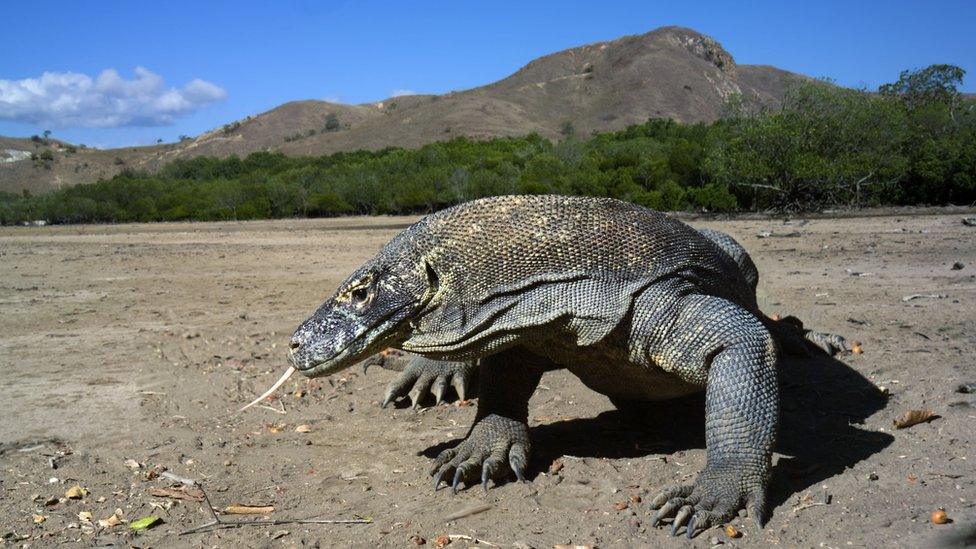Is Komodo dragon blood the key to new antibiotics?
- Published

The Komodo dragon is the largest living lizard in the world
Komodo dragon blood contains an important compound which scientists think could offer a new treatment for infected wounds.
The reptile's saliva harbours many different types of bacteria, which somehow do not affect the dragon.
Scientists at George Mason University in the US created a synthetic compound based on a molecule in dragon blood that had antimicrobial activity.
They found it promoted the healing of infected wounds in mice.
The study - published in - suggests that the protein could potentially be developed into an antibiotic in the future.
The scientists believe this could be a step forward in the quest to find new antibiotics that are needed to fight multidrug-resistant pathogens.
Enter the dragon
The dragons that are found on five islands in Indonesia have more than 80 bacterial strains in their mouths, including some that cause blood poisoning or sepsis.
The reptiles are not harmed by the bacteria - suggesting they are immune.
Led by Monique van Hoek, the team in Virginia found DRGN-1 worked well on infected wounds in mice against two bacterial strains, the "superbugs" Pseudomonas aeruginosa and Staphlyococcus aureus, also known as MRSA.
These two bacteria are particularly stubborn and hard to treat as they have bacteria that stick together to form colonies (or biofilms) that are much more resistant to antibiotics than a single bacterium.
They suggest that DRGN-1 assists wound-healing both through antimicrobial activity and also by promoting the migration of skin cells to close the wound.
Although it has only been tested on mice and on only two bacteria strains, they believe DRGN-1 is a good candidate for additional studies and possible development as a topical therapeutic agent for infected wounds.
- Published15 February 2017
- Published18 August 2015